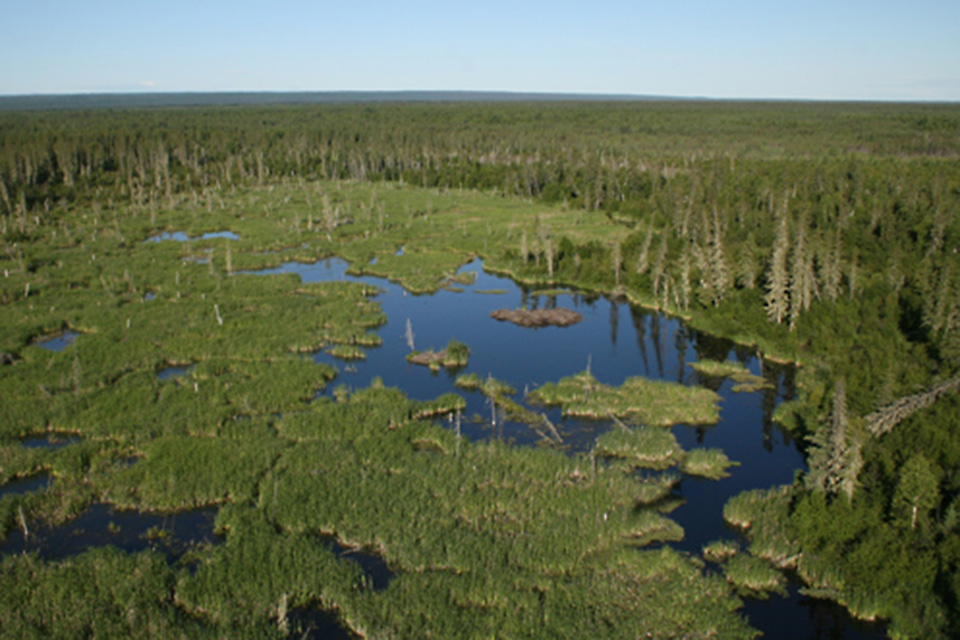Current Temperature
-22.0°C

I.C.Y.M.I.: The World’s Largest Beaver Dam Is In Alberta & You Can Literally See It From Space
Posted on May 31, 2024 by Britanny Burr
Picture this: a colossal structure, intricately woven from branches, twigs, and mud, stretching across the landscape as far as the eye can see. It's not a man-made wonder like the Great Wall of China or the Pyramids of Egypt, but rather a creation of one of nature's most ingenious engineers—the beaver. Nestled in Wood Buffalo National Park in Alberta, Canada, lies the world's largest beaver dam, an awe-inspiring feat that is so massive it can be seen from space. Yes, you read that right! Let's delve into the fascinating world of the beaver and discover the astonishing story behind this extraordinary creation.
Wood Buffalo National Park is a vast wilderness that straddles the Alberta-Northwest Territories border. Covering an area larger than Switzerland, it is home to a diverse range of flora and fauna, including the iconic beaver. Beavers are renowned for their ability to transform landscapes by constructing dams and lodges. These industrious creatures have been shaping the environment for thousands of years, and their architectural skills are truly remarkable.
The beaver dam in Wood Buffalo National Park, known as the "Lac St. Clair Beaver Dam," is a true testament to the beavers' determination and ingenuity. Spanning an incredible length of approximately 850 meters (2,790 feet), it is the largest beaver dam ever recorded. To put that into perspective, it's almost three times the length of the Empire State Building!
So, how did these furry engineers manage to create such an enormous structure? Well, it all starts with their innate instinct to build and maintain a suitable habitat. Beavers construct dams across rivers and streams to create deep ponds that provide protection from predators and serve as a reliable food source during the winter months when water bodies freeze over.
Using their sharp teeth, beavers fell trees and gather branches, which they meticulously interweave with mud and stones to form the dam. The resulting structure is incredibly sturdy and resistant to erosion. Over time, the dam grows as the beavers continuously reinforce and expand it, creating a remarkable network of interconnected waterways.
The scale of the Dam is so immense that it was actually discovered via satellite images. “Scientists were examining thousands of satellite images searching for the effects of melting permafrost and landscape changes that result from climate change. They found the beaver dam by coincidence during this work, noticing its very large and distinctive horseshoe-shaped shoreline,” said the Government of Canada’s Website.
Wood Buffalo National Park, recognized as a UNESCO World Heritage Site, serves as a vital refuge for countless species, and the beaver dam plays a crucial role in its ecosystem. The dam acts as a natural water regulator, controlling water flow and preventing flooding during periods of heavy rainfall. It also creates a rich wetland habitat that supports an array of plants, insects, birds, and mammals.
Wood Buffalo National Park offers visitors a unique opportunity to witness the beaver's impressive handiwork up close. Exploring the park's wetlands and waterways, you can observe the beavers diligently building and maintaining their dams, an experience that truly showcases the wonders of nature's engineering prowess.
Britanny Burr is a freelance writer and a contributor to Great West Media. This content has been republished for the Great West Media & Southern Alberta Newspapers Hot Summer Guide advertising feature. The Hot Summer Guide is a special feature about summer activities, bucket list adventures, staycation options, road trips, attractions, events, and road trip-worthy food & beverage destinations across Alberta. It is not written by and does not necessarily reflect the views of the editorial staff.
This article was originally published on June 1, 2023.
Leave a Reply
You must be logged in to post a comment.
 Log In
Log In


